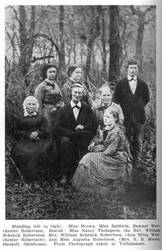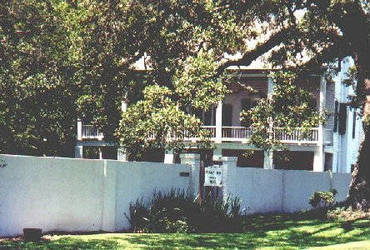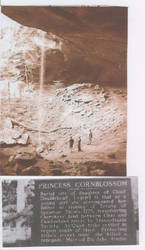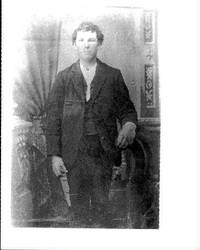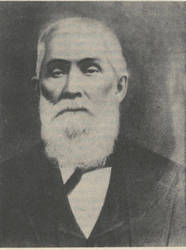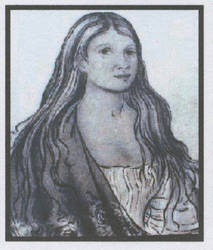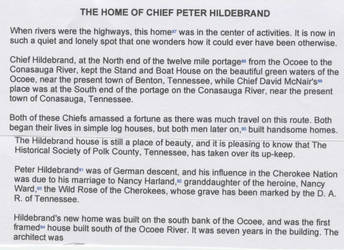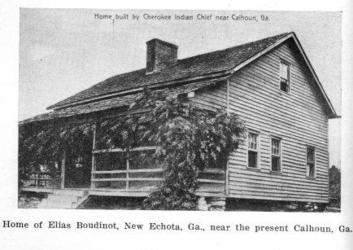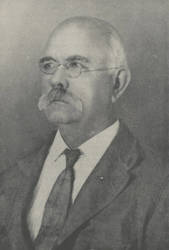|
|
About Cherokee Chiefs & Related Kin & Other Notable Cherokees and Historical Cherokee Sites
This website is to honor those who have led our Cherokee People; it is a
continuing website--all information came from the internet; it is intertwined
with my other website at: Alice's Corner and referals
will be noted.
**Please do not take everything as factual because all information came from the
internet!!! PLEASE EMAIL CORRECTIONS TO ME.
Special mention and sources: "Cherokee Lineages" by James R. Hicks and "The
History of the Cherokee Indians" by Emmet Starr.
**********************************
For more information about the Eastern Cherokee Chiefs, click on: Eastern Cherokee Chiefs.
***************************
Early leaders:
Before 1794, the Cherokee had no standing national government. Their structure was based on clans and towns, which had various leaders. The clans had functions within each town and the tribe. The towns appointed some leaders to represent the tribe to British, French, and (later) American authorities. The range of aboriginal titles were usually translated into English as "chief." The term "emperor" is placed in quotes, since this title was created by Sir Alexander Cuming and was not accepted by the tribe as a whole.
1. Outacite (d. 1729), peace chief, signed a 1720 treaty with Governor Nicholson, outacite is actually his title
2. Charitey Hagey of Tugaloo (1716–1721)
3. Long Warrior of Tanasi (1729–1730)
4. Wrosetasetow, "emperor" of the Cherokees until 1730; real title was Ama-edohi or "water-goer" [served as a trade commissioner]
5. Moytoy of Tellico (also known as Ama-edohi); (d. 1741), declared "emperor" by the British from 1730 until 1741, real title was Ama-edohi or "water-goer" 6. Attakullakulla (or "Little Carpenter", Ada-gal'kala, Attacullaculla, Oukou-naka)(1708/1711 –1780), white peace chief from Echota recognized as primary chief by the British, or "president of the nation" from 1762 to 1778
7. Amouskositte (or Ammouskossittee, Amascossite, Ammonscossittee, Amosgasite, "Dreadfulwater") of Great Tellico (b. ca. 1728), served as "emperor" from 1741–1753, son of Moytoy 8. Old Hop (or Guhna-gadoga, Kanagatucko, and "Standing Turkey")[11](1753–1756), war chief from Echota; either Ammouskossitte's uncle or father.
9. Moytoy of Citico (or Amo-adaw-ehi), war chief during the Anglo-Cherokee War (1759–1761), nephew of the Moytoy of Tellico.
10. Uka Ulah (also Ukah Ulah)(d. 1761), "emperor;" nephew of Old Hop, 11. Stalking Turkey (or Cunne Shote), traveled to England in 1762 with Henry Timberlake 12. Outacite of Keowee (ca. 1703–ca. 1780) (also known as "Judd's Friend", Outacity, Outassite, Outacite, Outassatah, Wootasite, Wrosetasetow,[13] Ostenaco, Outassete, Scyacust Ukah) traveled to England in 1762 with Henry Timberlake, chief
13. Oconostota (also known as Ogan'sto', "Groundhog Sausage") (1712–1781), red war chief of Echota, served entire tribe from 1778–1785,
14. Savanukah of Chota (1781–1783)
Old Tassel (or "Corntassel," "Tassel," Kaiyatahee) (d. 1788), peace chief from Echota, served from 1783–1788
15. Raven of Chota (or Colonah), war chief; nephew of Oconostota 16. Little Turkey, served from 1788–1794 opposed by Hanging Maw (or Scolaguta), served 1788–1794
Chickamauga/Lower Cherokee (1777–1809)[edit]
In 1777, Dragging Canoe and a large body of Cherokee separated themselves from the tribes which had signed treaties of peace with the Americans during the American Revolution. They migrated first to the Chickamauga (now Chattanooga, Tennessee) region, then to the "Five Lower Towns" area —further west and southwest of there —in order to continue fighting (see Chickamauga Wars). In time, these Chickamauga Cherokee became a majority of the nation, due to both sympathy with their cause and the destruction of the homes of the other Cherokee who later joined them. The separation ended at a reunification council with the Cherokee Nation in 1809.
Chiefs:
Dragging Canoe (1777–1792)
John Watts (1792–1802)
Doublehead, brother of Old Tassel, served from 1802–1807
The Glass, or Ta'gwadihi (1807–1809)
Cherokee Nation East (1794–1839)
John Ross, c. 1866
Little Turkey was elected First Beloved Man of the Cherokee (the council seat of which was shifted south to Ustanali near what is now Calhoun, Georgia) in the aftermath of the assassination by frontiersmen of Corntassel (also called Cornsilk) and several other leaders. Hanging Maw of Coyatee, listed above, claimed the title as his right by tradition, as he was the headman of the Upper Towns. Many Cherokee and the US government recognized him as Principal Chief. Little Turkey was finally recognized as "Principal Chief of the Cherokee Nation" by all the towns after the end of the Chickamauga Wars when the Cherokee established their first nominal national government. Little Turkey (1794–1801)
Black Fox (1801–1811)
Pathkiller (1811–1827) Big Tiger (1824–1828); principal chief of the faction of those in the Nation following Whitepath's teachings inspired by the Seneca prophet Handsome Lake. Charles R. Hicks (1827), de facto head of government from 1813 William Hicks (1827–1828)
John Ross (1828–1839) William Hicks (1833–1835), elected principal chief of the faction supporting emigration to the west.
Cherokee Nation West (1810–1839)[edit]
Originally along the St. Francis and White Rivers in what was first Spanish Louisiana and later Arkansas Territory, the Western Cherokee eventually migrated to Indian Territory after the Treaty of Washington in 1828. They named their capital there Tahlontiskee. John Jolly died while the Latecomers were arriving and John Looney succeeded automatically. Looney was deposed by the council and replaced with Brown with a view toward putting the Cherokee Nation West in a better position vis-a-vis the Ross party. After the murders of Major Ridge, John Ridge, and Elias Boudinot (Treaty party members who supported the Old Settlers) in June 1839, the council had a change of heart about resisting Ross' autocratic demands and deposed Brown, replacing him with Looney. A sizable faction of the Old Settlers refused to recognize Looney and elected Rogers in his stead, but their efforts to maintain autonomy petered out the next year.
The Bowl (1810–1813)
Degadoga (1813–1817)
Tahlonteeskee (1817–1819)
John Jolly (1819–1838)
John Looney (1838–1839)
John Brown (1839)
John Looney (1839)
John Rogers (1839–1840)
Eastern Band of Cherokee Indians (1824–present):
Yonaguska (1824–1839)
William Holland Thomas (1838–1869)
Salonitah, or Flying Squirrel (1870–1875)
Lloyd R. Welch (1875–1880)
Nimrod Jarrett Smith (1880–1891)
Stillwell Saunooke (1891–1895)
Andy Standing Deer (1895–1899)
Jesse Reed (1899–1903)
Bird Saloloneeta, or Young Squirrel (1903–1907)
John Goins Welch (1907–1911)
Joseph A. Saunooke (1911–1915)
David Blythe (1915–1919)
Joseph A. Saunooke (1919–1923)
Sampson Owl (1923–1927)
John A. Tahquette (1927–1931)
Jarret Blythe (1931–1947)
Henry Bradley (1947–1951)
Jarret Blythe (1955–1959)
Osley Bird Saunooke (1951–1955)
Jarret Blythe (1955–1959)
Olsey Bird Saunooke (1959–1963)
Jarret Blythe (1963–1967)
Walter Jackson (1967–1971)
Noah Powell (1971–1973)
John A. Crowe (1973–1983)
Robert S. Youngdeer (1983–1987)
Jonathan L. Taylor (1987–1995)
Gerard Parker (1995)
Joyce Dugan (1995–1999)
Leon Jones (1999–2003)
Michell Hicks (2003–present)
[Source: For more information, click on: Principal Chiefs of the
Cherokee.]
***********************************
*Indicates that they are finished.
The following lists come from: The Cherokee Nation website:
http:www.cherokee.org/Culture/ and other sources:
EARLY CHEROKEE CHIEFS:
*Moytoy, *Moytoy (Pigeon of Tellico) (1730-60); *Atakullakulla (1760-1775);
*Oconostota (1775-1780); *Hanging Maw (1780-1792); Little Turkey (1792-1801);
*Black Fox (1801-1811); *Pathkiller (1811-1827); *Charles Renatus Hicks
(1827); *William Abraham Hicks (1826-1828); *John Ross (1828-1839) prior to
being elected under the 1839 Constitution in Indian Territory; *Chief Major
Ridge & son *John Ridge; *Sour Mush; Chief Kelechule; Chief Sleeping Rabbit;
Chief Roman Nose.
OTHER EARLY CHEROKEE CHIEFS:
*Ostenaco (War Chief)--French & Indian War; *Oconstota(Cunne Shote,
Stalking Turkey or Standing Turkey)--one of 3 Cherokee Chiefs who travelled to
London in 1762 to see King George III (nephew of the Chief "Old Hop"); *Old
Hop; *Doublehead; *Chief (Major) George Lowrey; *Asst. Chief George Lowrey;
*Chief Red Bird; *Chief John Watts Jr.; *Chief White Path, *Chief Fly Smith;
*Chief Chulioa (Shoeboot);
OTHER CHIEFS, TOWN CHIEFS, AND IMPORTANT CHEROKEE People: *Sequoyah (George
Guess);*Chief James Vann and son *Joseph Vann; *David Vann; *Chief John Benge;
*Robert "Bob" Benge; *William "Will" Penn Adair Rogers, *Ned Christie; *George
Washington Fields Jr.; *Richard George Fields, Capt. & Judge; *Houston B.
Teehee; *US Sen. *Robert L. Owen; *NANCY (Nanye'hi) WARD; *Princess
Cornblossom Doublehead and husband Jacob "Big Jake Troxell; *Diana "Talihina"
Rogers and husband Sam Houston; *The Terrapin; Commission Appointed by Pres.
Cleveland in 1893: *CN Senator William H. Hendricks Jr. (Pres.); James M.
Keys; Thomas R. Knight, Coffee Woodall, and Darius E. Ward (Sec.); *CN/Sen. &
Judge John Gunter Schrimsher; *Stephen Riley Lewis; *Rev. Jesse Bushyhead;
OLD SETTLER CHIEFS (AR):
*Col. John Bowles (1795-1813); Takatoka (1813-1818); Tahlonteskee (1818-1819);
*John Jolly (1819-1838); *John Rogers Jr. (1838-1839); *John Looney (1838-Apr.
22, 1839 and July 1839-Sep 1839, when the Oklahoma Settler (Western) Cherokee
signed an agreement with the Eastern Cherokee, and the Cherokee Nation's 1839
Constitution was signed into agreement; Third Chief: *Thomas Chishom; *Chief
Black Coat.
CONSTITUTIONAL CHIEFS OF THE CHEROKEE NATION (Federally Recognized Tribe)(IT &
OK):
*John Ross (1827-1866); *William Potter Ross (1866-1867, 1872-1875); *Lewis
Downing (1867-1872); *Charles Thompson (1875-1879); *Dennis Bushyhead (1879-
1888); *Joel Bryan Mayes (1888-1891); *Colonel Johnson Harris (1891-1895);
*Samuel H. Mayes (1895-1899); *Thomas Mitchell Buffington (1899-1903);
*William C. Rogers (1903-1907) (served until 1917 in various capacities); *W.
W. Keeler (1971-1975) (served since 1949, as named by US Presidents (see Chief
for A Day); *Ross Swimmer (1975-1985); *Wilma Mankiller (1985-1995); *Joe Byrd
(1995-1999); *Chadwick "Corntassel" Smith (1999); Acting Chief Joe Crittenden; Bill John Baker;
CHEROKEE CHIEFS OF TEXAS:
*John Bowles (*See Old Settler Chiefs, moved from MO to AR to TX, died in
1839); Big Mush (Hard Mush, and Gatunwali)(Diplomat or "War Chief") died in
1839;*Richard Fields (killed in 1827) (shared leadership with John Bowles);
*Tah-chee or "Dutch" refused to go to from AR to IT, settled in east Texas;
KEETOOWAH CHEROKEES (Federally Recognized Tribe in OK): *Redbird Smith and
sons: *Sam Smith, *John Redbird Smith; *Oce Hogshooter, Alex Deerinwater,
Lincoln Towle;
CHEROKEE CHIEFS OF THE EASTERN BAND, NC (Federally Recognized Tribe):
*Will Thomas (White Chief of the Cherokee), *Chief Drowning Bear, *Chief James
Billy; *Chief Junaluska (Snow Bird Clan); *Flying Squirrel (Call-lee-high)
Principal Chief and John Jackson (0-wah-ben-tee) 2nd Chief (1870-75); *Lloyd
R. Welch (1875-80); *Nimrod Jarret Smith (1880-91); Stilweel Saunooke (1891-
85); Andy Standing deer (1895-99); Jesse Reed (1899-1903); Bird Saloloneeta
(1903-07); John G. Welch (1907-11); Joseph A. Saunooke (1911-15); David Blythe
(1915-19); Joseph A. Saunooke (1919-23); Sampson Owl (1923-27); John A.
Tahquette (1927-31); *Jarrett Blythe 3 terms: (1931-47) (1955-59) (1963-67
(Retired); Jesse Reid; Leon Jones; Michell Hicks; Jonathan L. Taylor;
CHEROKEE CHIEFS OF THE CIVIL WAR (IT):
During the Civil War years, the Cherokee Nation was divided into factions--the
Northern and Southern. The National Council was dismissed and Chief John Ross
was in Philadelphia. Both sides attempted to conduct business when
necessary. Temporary Chiefs were chosen to lead for both sides.
[UNION CHIEFS]: *Major Thomas Peggs (1862-1863); Smith Christie (1863); and
*Lewis Downing (1864-1866) *See Constituional Cherokee Chiefs.
[CONFEDERATE CHIEFS]: *Stand Watie (assumed the title of Chief for the
Southern Cherokees for a while); John Spears, and Samuel McDaniel Taylor.
CHEROKEE CHIEFS FOR A DAY (Cherokee Nation IT & OK): Appointed by US Pres.,
for a day at a time to sign documents, among other such duties.
*Andrew Bell Cunningham, Chief for 17 days: Nov. 8-25, 1919; Edward M. Fry,
Chief for 1 day: June 23, 1923; *Richard B. Choate, Chief for 1 day, 1925;
*Charles J. Hunt, Chief for 1 day: Dec. 27, 1928; *Oliver P. Brewer, Chief for
1 day: May 26, 1931; *William W. Hasting, Chief for 1 day: Jan. 22, 1936;
*Jesse B. Milam, Chief for 1 day: Apr. 14, 1942 and also for 6 years from May
18, 1943 to May 8, 1949; *William W. Keeler, Chief for 22 years: July 1949
until Aug 1971 when he was elected by the Cherokee people and served until
1975.
ASST. CHIEFS OF THE CHEROKEE NATION [IT & OK]: [Source: Chronicles of OK]
*Joseph Vann 29 Sep 1839-26 Jun 1840); Anderson Vann 26 Jun 1840-43; George
Lowrey (1843-51); *Richard Fox Taylor (1851-55); John Spear (1855-59); Joseph
Vann (1859-62),(1867-1871); Robert Buffington Daniel (1871-16 Jan 1872); James
Vann (23 Nov 1872-75); David Rowe (1875-79); William P. Adair (1879-21 Oct
1880); *Rabbit Bunch (1880-5 Nov 1887); *Samuel Smith (1887-91); Henry
Chambers (Nov & Dec 1891); *Rev. Stephen Teehee (23 Dec 1891-95); *George
Washington Swimmer (1895-1903); *David McNair Faulkner (3 Aug 1903-30 Jun
1904).
CHEROKEE ARTISTS: *Talmadge Davis;
OTHER FAMOUS CHEROKEES: Granville "Oral" Roberts and son Richard Roberts,
evangelists; *For other famous people, *click on the 2 links listed below.
0THER CHEROKEE TRIBES:
There seem to be many Cherokee Tribes: Many Cherokees hid during the removal
and many stayed at locations along the Trail of Tears. Many states have state
recognized bands--AL has at least 4; GA, MO, AR, TX, CA...even Mexico!! All
of these Cherokees have the same blood in their veins as those in OK and NC!
My main goal was to list those found mainly in the Cherokee Nation of OK.
Miscellaneous Cherokee Information:
(1) *Legend of "Tsali" (Look under Tsali); (2) *Legend of the Cherokee Rose
(look under Cherokee Rose); *Legend of the Rose Rock (look under Rose Rock);
*Cherokee Village/Towns (look under Cherokee); *Seven Clans (look under Seven
Clans); The Seven Ceremonies of the Cherokee (look under Seven Ceremonies);
Cherokee Sacred Colors (look under Sacred Colors); Indian Affairs: Laws and
Treaties (look Indian Affairs: Laws and Treaties); Cherokee Tradition
Clothing (look under clothing);
HISTORICAL CHEROKEE SITES (*indicates finished): (1) *Brainerd Mission and
*Brainerd Mission Cemetery, Chattanooga, TN; (2) *Ross' Landing, Chattanooga,
TN; (3) *Chief John Ross Home, Rossville, GA; (4) *Red Clay, TN; (5) *Tellico
Blockhouse, Vonore, TN (6) *Fort Loudon, Vonore, TN; (7) *The Sequoyah
Birthplace Museum, Vonore, TN; (8) *Junaluska Museum (See Chief Junaluska);
(9) *Qualla Boundary (Eastern NC Cherokees) and the Museum of the Cherokee
Indian, Cherokee NC; 10) Dahlonega Gold Museum, GA; (11)
*Chieftains Museum/Major Ridge Home (see Major Ridge); (12) *Chief
James Vann Home (see Chief James Vann & Joseph "Rich Joe" Vann); (13)
*Cherokee Removal Forts (see Forts, Cherokee Removal); (14) *New
Echota, GA; (15) *Tahlequah, OK, Historic Chreokee Sites and Monuments; (16)
*Murrell Home at Park Hill, OK *See Murrell; (17) *Sequoyah's Home at
Sallisaw, OK, (*see George Guess);
*Cherokee Warrior Memorial (located at the Cherokee Tribal Complex, Tahlequah,
OK): see Memorial, Cherokee Warrior.
|

LOADING! Please wait ...
Getting Around
There are several ways to browse the family tree. The Tree View graphically shows the relationship of selected person to their kin. The Family View shows the person you have selected in the center, with his/her photo on the left and notes on the right. Above are the father and mother and below are the children. The Ancestor Chart shows the person you have selected in the left, with the photograph above and children below. On the right are the parents, grandparents and great-grandparents. The Descendant Chart shows the person you have selected in the left, with the photograph and parents below. On the right are the children, grandchildren and great-grandchildren. Do you know who your second cousins are? Try the Kinship Relationships Tool. Your site can generate various Reports for each name in your family tree. You can select a name from the list on the top-right menu bar.
In addition to the charts and reports you have Photo Albums, the Events list and the Relationships tool. Family photographs are organized in the Photo Index. Each Album's photographs are accompanied by a caption. To enlarge a photograph just click on it. Keep up with the family birthdays and anniversaries in the Events list. Birthdays and Anniversaries of living persons are listed by month. Want to know how you are related to anybody ? Check out the Relationships tool. |
|
|

